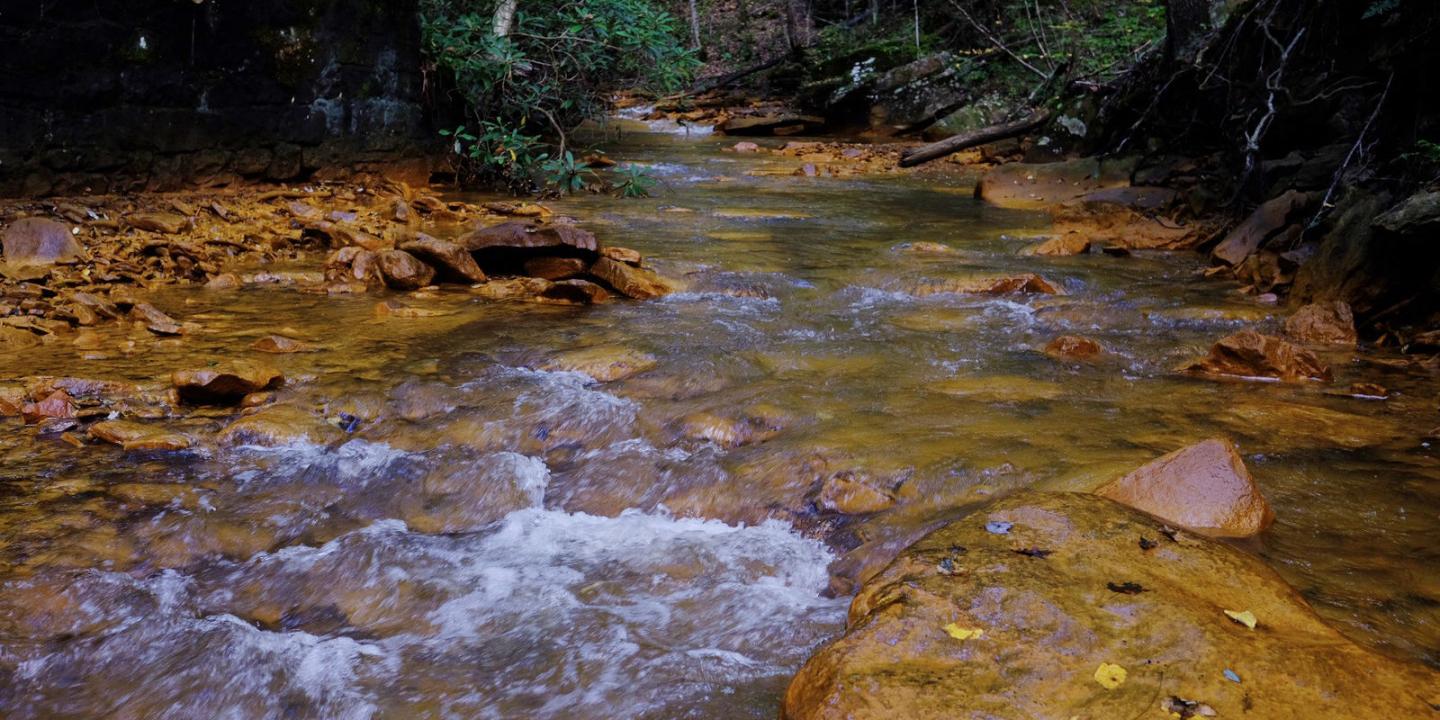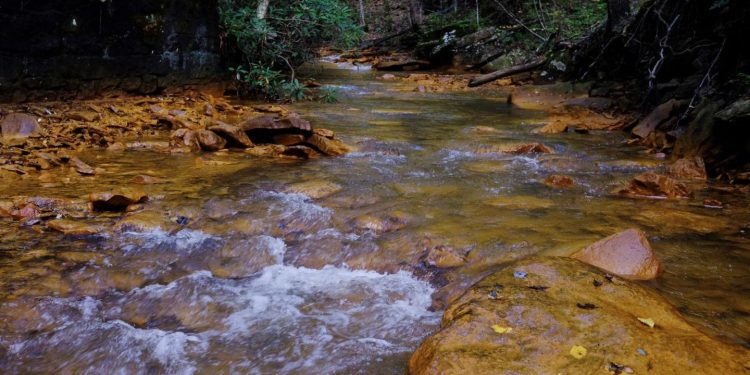
Credit: Raymond Thompson Jr./West Virginia University
The West Virginia Water Research Institute at West Virginia University has been awarded $5 million by the U.S. Department of Energy to scale up its successful Rare Earth Recovery Project, which will include building a facility at a new acid mine drainage treatment plant near Mount Storm.
The funding received the full support of West Virginia’s five congressional delegates and will help continue ongoing research of the project, which began with a pilot plant in 2018.
Rare earth elements are used to power everything from smartphones to the nation’s missile guidance system, and they come from an unlikely Appalachian source – acid mine drainage sludge.
With the new funding, the WVWRI will partner with the West Virginia Department of Environmental Protection’s Office of Special Reclamation to design and build the plant, Rockwell Automation to provide sensor and control technology, and TenCate Corporation to engineer materials for rare earth element extraction.
“This is a great opportunity to demonstrate the economics and environmental benefits of combining AMD treatment, watershed restoration and critical mineral recovery,” said Paul Ziemkiewicz, director of the WVWRI. “The team has worked together for the past several years and we are poised to move rapidly toward commercial development.”
Rare earth metals consist of the 17 chemically similar elements at the bottom of the periodic table, such as cerium and scandium. Despite their name, they’re not “rare” because they’re often found in other minerals, within the earth’s crust or, in this case, in coal and coal byproducts.
Ziemkiewicz initially helped jumpstart the project by examining 120 acid mine drainage treatment sites throughout West Virginia, Pennsylvania, Maryland and Ohio. His team found that acid mine drainage could produce up to 2,200 tons of rare earth elements per year in those states.
About 15,000 tons of rare earth elements are used annually in the U.S., although the country imports nearly all of them. China produces roughly 83 percent of the world’s rare earth elements used in modern technologies such as phones, batteries, TVs and medical and defense applications.
The U.S. has lagged behind in this market because the processing of rare earths is considered cumbersome, costly and energy intensive. Conventional extraction efforts involve grinding through masses of rock and disturbing undeveloped land.
In 2018, with National Energy Technology Laboratory funding, a bench scale pilot plant was opened through a collaboration with Rockwell Automation and Shonk Investments LLC on WVU’s campus to test the technical and economic feasibility of extraction and refining technology, with an eye to rapid commercialization.
“AMD treatment is an environmental obligation,” Ziemkiewicz said. “But it could turn into a revenue stream and create economic opportunity.”
“The WVDEP fully supports WVWRI’s efforts in developing a new way to treat AMD,” said Mike Sheehan, deputy director of the Division of Land Reclamation at the West Virginia DEP. “The extraction of REE could serve as a potential revenue source that could offset some of OSR’s treatment cost.”
Collaborations with various groups and elected officials have been vital to the success of the project. Comments from all five West Virginia congressional delegates include:
“One of my main priorities as Ranking Member of the Senate Energy and Natural Resources Committee is to support and promote advancements in clean coal energy technologies,” said Sen. Joe Manchin. “I am thrilled to see the Department of Energy recognize the world-class research conducted at WVU. These projects allow continued use of our domestic resources in an environmentally friendly way and will help reduce our vulnerability to foreign sources of rare earth elements.”
“I am ecstatic that the Department of Energy continues to recognize the value of the critical work Dr. Ziemkiewicz and his team are doing at West Virginia University in extracting rare earth elements from acid mine drainage,” said Sen. Shelley Moore Capito. “REEs are essential to modern advanced manufacturing, and WVU’s technology will help provide a domestic source of this material while cleaning up legacy mine waste. This is a win-win-win for our economy, our national security, and the environment.”
“From your cell phone to weapons systems, rare earth elements are increasingly important in manufacturing,” said Rep. David B. McKinley. “Currently, China controls the vast majority of the rare earth element supply, which puts the United States at risk. WVU’s work to develop a domestic source is critical and this funding will go a long way in helping them continue their research. The research being done by WVU will help to build an American supply chain and ensure that we are not dependent on other nations for our supply.”
“I am very pleased WVU is receiving this funding and proud to have supported their efforts,” said Rep. Alex X. Mooney. “This project offers a great opportunity to both help the environment, by cleaning the water supply near Mount Storm and providing economic development through the extraction of rare earth metals. Look forward to continuing to work my colleagues in the West Virginia Congressional Delegation to support this research.”
“Dr. Ziemkiewicz and his team at West Virginia University are performing groundbreaking research that is leading the way in innovating our energy industry,” said Rep. Carol MIller. “The ability to extract rare earth minerals from Acid Mine Drainage would dramatically invigorate our economy by creating new, stable jobs and increasing our export capabilities. West Virginia energy already powers our nation, and this research could significantly advance U.S. independence in the rare earth mineral marketplace and provide much-needed resources to our technology and defense industries from right here in Appalachia.”
###
Media Contact
Megan Kruger
[email protected]
Original Source
https:/





